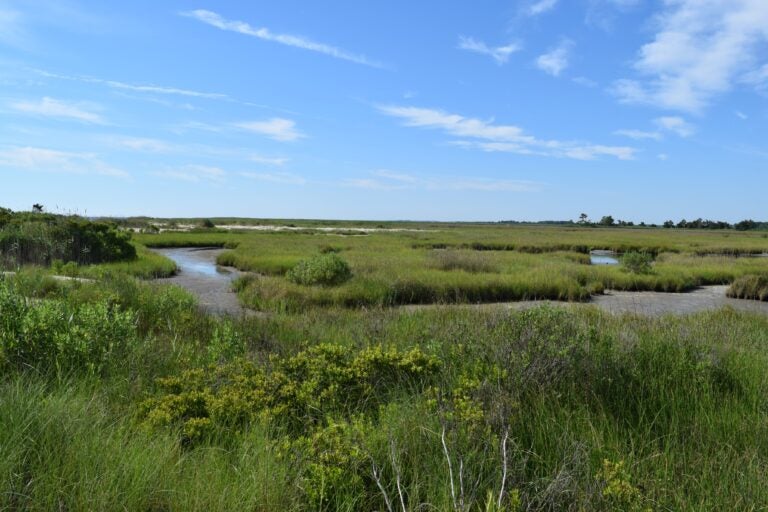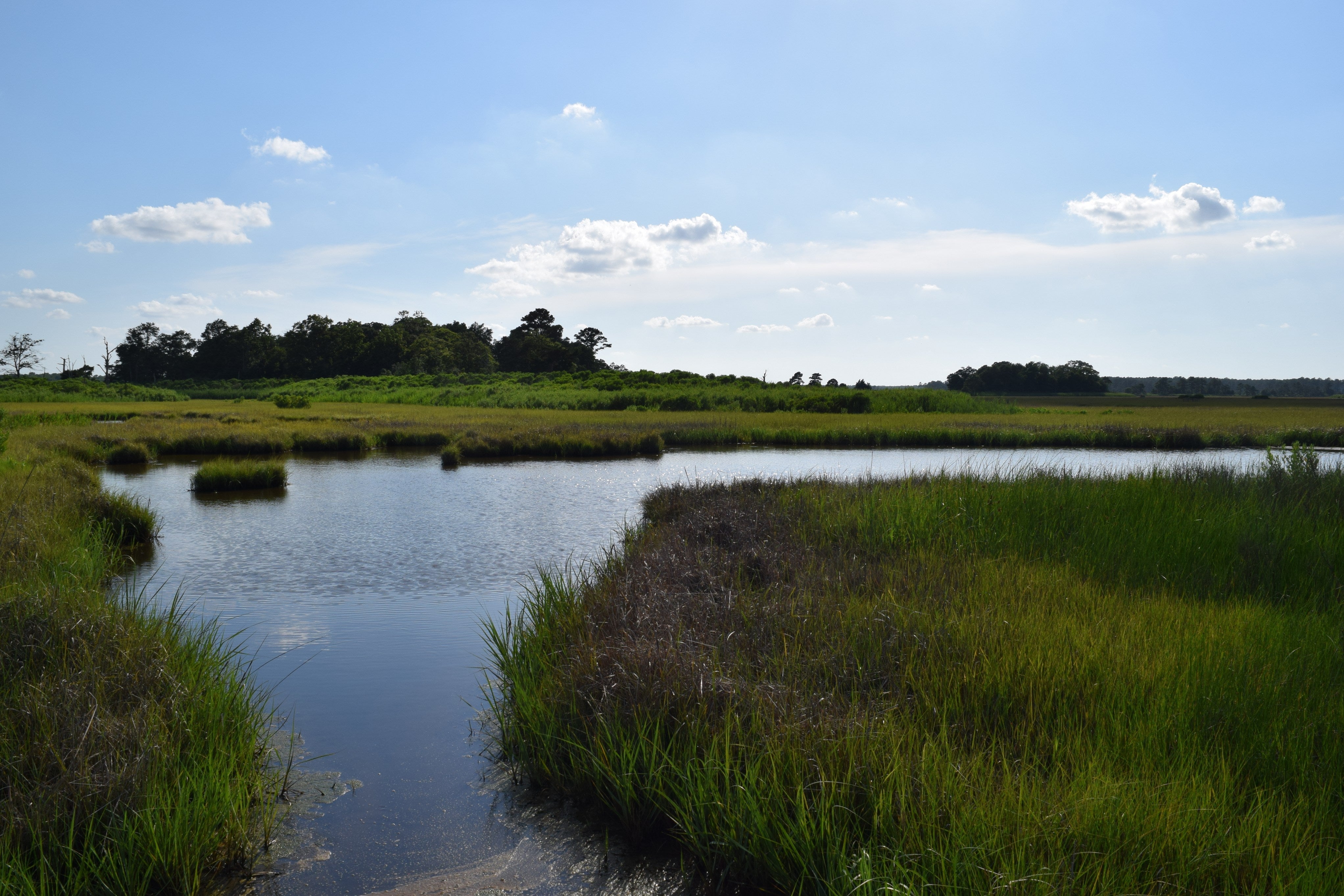Rare black rail bird spotted in southern Delaware’s salt marshes at Milford Neck Preserve
After two years of assessment, researchers say they’ve found the rare and threatened black rail bird, along with other species, at Milford Neck Preserve.
Listen 1:33
The salt marshes at Milford Neck Preserve are home to the rare black rail bird. (John Hinkson/The Nature Conservancy)
From Philly and the Pa. suburbs to South Jersey and Delaware, what would you like WHYY News to cover? Let us know!
Nestled in southern Delaware, Milford Neck Preserve is a lush sanctuary teeming with marshes that seem to stretch without end, providing the perfect habitat for rare and secretive birds. As dusk falls, these marshlands come alive with a symphony of natural sounds and the calls of hidden birds and insects echoing through the night.

After two years of testing and assessing the park, researchers made a discovery that surprised environmentalists and nature lovers: the appearance of the rare and threatened black rail bird.
“Within the past year, [we] have been doing some of these rare, secretive marsh bird surveys at our Milford Park Preserve using audio recorders in the evenings,” said Natasha Whetzel, the Delaware stewardship program manager for The Nature Conservancy.
Throughout those years, Christopher Hecksher, a professor of environmental science at Delaware State University, immersed himself in surveying the park’s wildlife, expanding the understanding of its biodiversity. He would collect nighttime recordings and then work to differentiate the diverse chirps and sounds to aid in species identification.
“I did a survey over the last couple of years primarily to try to determine the presence or absence of the black rail, which is a very rare and secretive marsh-inhabiting bird,” he said. “At the same time, I was attempting to document other secretive birds that aren’t easily observed on the preserve.”
In addition to the black rail, Hecksher was successful in finding some of those other shy species that like to hang out in high salt marshes, known as brackish marshes.
“On the recordings, we did hear pied-billed grebe, American bittern, common gallinule. We did hear sora, which is another closely related rail.”
They also identified clapper rail, king rail and Virginia rail in the marsh.
Hecksher noted a test like this had never been done before. He said it’s crucial work due to the potential threat to species like the black rail. The find could result in increased protection measures for such endangered species.
“[The black rails] were not listed as federally endangered but they were listed as federally threatened, which is the highest level in terms of protection,” he said. “The Eastern population of black rail did warrant some federal oversight in the sense of, it could in the future — if we don’t manage our wetlands properly or if climate change accelerates that sort of thing — it could be in danger of becoming extinct.”
Wildlife species are currently facing various pressures, including habitat fragmentation, augmentation and conversion. One of the most significant challenges presently is the impact of climate change and sea level rise.
“A lot of the marshes on The Preserve [in Milford] are quite high-quality marshes, so they don’t have a lot of invasive species. They don’t seem to have the flooding problems that we see in some of the other marshes,” Hecksher said. “I’d just be vigilant of things that might threaten the rail in the future rather than doing any active management for the rail, in other words, protecting the high-quality marshes.”
TNC, in collaboration with the University of Delaware and the University of Maryland, has submitted a grant proposal to restore more areas in Delaware. Their aim is to continue supporting salt marshes, which can benefit both the ecosystem and birds like the black rail.

Saturdays just got more interesting.
WHYY is your source for fact-based, in-depth journalism and information. As a nonprofit organization, we rely on financial support from readers like you. Please give today.






